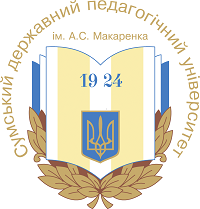ROMAN CULTURAL TEXT IN D. BROWN'S NOVEL “ANGELS AND DEMONS”
DOI:
https://doi.org/10.32782/philspu/2025.11.20Keywords:
Dan Brown, travel guide novel, Roman cultural text, city signatures, ekphrasis, Vatican discourseAbstract
The article is devoted to the study of the problem of the Roman cultural text based on the material of Dan Brown's novel "Angels and Demons". The purpose of the article is to investigate the constituent elements and features of the Roman text that represent its cultural identity.The genre specificity of Brown's work is determined as a tourist guide novel, which is confirmed by topography, attention to iconic cultural monuments and prominent citizens, and the presence of a kind of guide – a specialist in art history and symbology, Professor Langdon.In the process of studying the cultural text of the city, genetic, material-cultural, and spiritual-cultural elements are identified that are significant in the space-time continuum.The markers of the Roman text, which are presented as name-dropping, stringing together the names of the city prominent signatures, are considered. In defining Rome as the "eternal city" representing all cultural eras, attention is paid to the Renaissance and Baroque eras, which are represented by the names of Raphael, Michelangelo, Galileo, Bernini and their creative achievements that have entered the Roman cultural space.The ekphrasis of the city architectural and sculptural monuments is explored, which is conveyed through Langdon's perception of them using internal, indirect, and direct speech.The spiritual sphere includes myths, legends, and historical tales associated with specific locations (an island on the Tiber where healings take place) and personalities, most notably Saint Peter, with whom the history, toponymy, and architecture of Rome are associated.The Vatican discourse is highlighted, which includes historical-political, architectural-topographic, artistic-cultural, spiritual- cultural, ceremonial-traditional, religious-ethical elements and occupies a prominent place in the novel.The detective component of the novel is analyzed, which is related to the solution of the Roman signpost to the secret temple of the Illuminati society.
References
Гура Н. П., Бойко О. К. Жанрова своєрідність циклу романів про професора Ленґдона. Вісник Маріупольського державного університету. Серія : Філологія. 2014. Вип. 10. С. 21-27.
Літературознавча енциклопедія : у 2 т. / авт.-уклад. Ю. І. Ковалів. Київ : ВЦ «Академія», 2007. Т. 1. 608 с.
Черник О. О. Романи Дена Брауна: жанр та концептосфера. Вісник Київського національного лінгвістичного університету. Серія : Філологія. Т. 19. № 1. 2016. С. 146-154.
Rajewsky I.O. Intermediality, intertextuality, and remediation: A literary perspective on intermediality. Intermédialités: Histoire et théorie des arts, des lettres et des techniques. Montréal. 2005. № 6. P. 43–64.
Wolfreys J. Writing London: the trace of the urban text from Blake to Dickens. London: Macmillian Press, 1998. 249 p.
Браун Д. Янголи і демони. URL: https://uabooks.net/211-yangoly-i-demony.html (дата звернення 26.07.2025).
Cox S. Illuminating Angels and Demons: The Unauthorized Guide to the Facts behind the Fic- tion. New York, Barnes & Noble. 2004. URL: https://cdn.bookey.app/files/pdf/book/en/illuminating-angels-and-demons-.pdf (дата звернення 30.07.2025).








